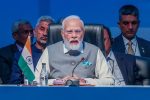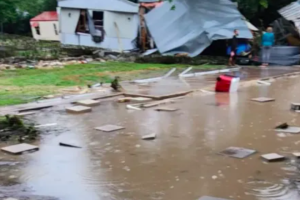Terror group Tehrik-e Taliban Pakistan (TTP) and its various splinter groups will continue to align themselves with Islamic State in Iraq and the Levant-Khorasan (ISIL-K) regardless of how the Afghan peace process develops, a report of UN chief Antonio Guterres has said.
ISIL-K also aims to take advantage of the changing dynamics of the Afghan peace process and to attract Taliban fighters and foreign terrorist fighters who oppose the agreement reached between the Taliban and the United States, the report said.
“It is expected that TTP and its various splinter groups will continue to align themselves with ISIL-K regardless of how the Afghan peace process develops,” the 11th report of the Secretary-General on the threat posed by ISIL (Da’esh) to international peace and security and the range of United Nations efforts in support of Member States in countering the threat said.
The ISIL-K is a branch of the militant Islamist group Islamic State of Iraq and the Levant active in South Asia and Central Asia.
The report added that some of the terrorist groups active in Afghanistan cooperate closely with ISIL-K. Many former members of Tehrik-e Taliban Pakistan in Afghanistan have already joined ISIL-K, many of whose leaders are former TTP members, it said.
The report added that despite its significant territorial losses, ISIL-K remains capable of carrying out high-profile attacks in various parts of Afghanistan, including Kabul.
“ISIL-K seeks to pursue a global agenda by implementing the approach of the ISIL core, namely using Afghan territory as a base for spreading terrorist influence across the wider region,” it said.
In case of further military pressure on ISIL-K in Kunar Province, the group is expected to retreat to Badakhshan and other northern provinces of Afghanistan.
The report said that it is estimated that the current ISIL-K strength in Afghanistan is approximately 2,200 members and the group’s new leader is Matiullah Kamahwal, previously the head of ISIL-K in Kunar Province.
The leadership also includes Syrian nationals Abu Said Mohammad al-Khorasani and Abdul Tahir.
ISIL-K has maintained its association with the leader of ISIL, Amir Muhammad Sa’id Abdal-Rahman al-Mawla, through foreign terrorist fighters. However, it is assessed that the ISIL core no longer has a significant role in the decision-making of ISIL-K, the report said.
The Secretary-General said in the report that the COVID-19 pandemic’s impact on ISIL propaganda, recruitment and fundraising activities remains unclear.
“Socioeconomic fallout from the crisis could exacerbate conditions conducive to terrorism and increase the medium- to long-term threat, within and outside conflict zones.”
ISIL financial reserves are assessed by the Member States to total around USD 100 million. The group continues to fundraise through different avenues, including kidnapping for ransom, private donations and some extortion of commercial activity, it said.
Guterres said in the report that while the threat of terrorism appears to have temporarily decreased in non-conflict zones, the pandemic could compound the threat in fragile and conflict-affected States, where Governments face challenges in asserting their authority, especially in remote areas and border regions.
The pandemic has strained government resources, and travel restrictions have further hampered the provision of services to local populations.
With ISIS and other terrorist groups attempting to exploit the COVID-19 pandemic for their own ends, the international community must respond with stronger collective action and cooperation, Head of the UN Office of Counter-Terrorism Vladimir Voronkov said.
He added that the global coronavirus crisis underscored the challenges involved in eliminating terrorism.
“This pandemic environment raises several strategic and practical challenges for counter-terrorism,” he told Council members during a video-teleconference briefing.
In non-conflict areas, the threat seems to have decreased in the short term, with COVID-19 lockdowns and restrictions apparently lowering the risk of attacks.
However, “opportunistic propaganda efforts” by ISIL could be fuelling an ongoing trend of attacks by individuals and small groups, he said, adding that it is unclear how the pandemic is affecting ISIL’s recruitment and fundraising efforts, or whether there is a change in strategic direction under its new leader, Amir Muhammad Sa’id Abdal-Rahman al-Mawla.
His predecessor, Abu Bakr al-Baghdadi, was killed during a US military operation in Syria in 2019.
Voronkov said that ISIL continues to consolidate its position in some parts of the Middle East previously under its control, “operating increasingly confidently and openly”.
More than 10,000 ISIL fighters are estimated to be active in Iraq and Syria, moving freely in small cells between the two countries, he said, adding that 2020 has seen a “significant increase” in ISIL attacks in both States compared to 2019.

























Add Comment